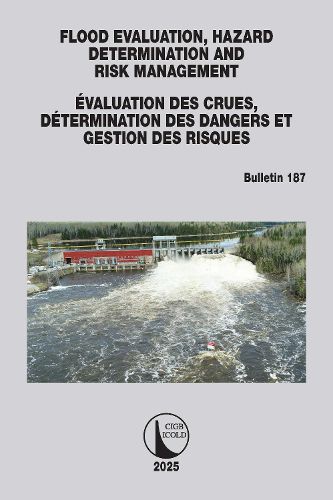Readings Newsletter
Become a Readings Member to make your shopping experience even easier.
Sign in or sign up for free!
You’re not far away from qualifying for FREE standard shipping within Australia
You’ve qualified for FREE standard shipping within Australia
The cart is loading…






Design criteria for the construction or rehabilitation of dams and hydraulic structures generally begin with a section defining the design flood. Flood determination methods have evolved over the years, but must continue to progress given the degree of uncertainty surrounding the assessment of extreme floods and the fact that factors external to flooding must be taken into account in risk assessment. This ICOLD Bulletin 187 follows in the footsteps of the previous one. It consists of three main chapters following the introductory chapter. The second chapter examines the main aspects of flood volume. The third chapter follows on from the previous bulletin and looks in more detail at stochastic approaches to flood risk assessment. The final chapter deals with the forecasting aspects of proactive flood management. Case studies illustrating short-, medium- and long-term management challenges are presented in Appendix A.
Les criteres de conception pour la construction ou la rehabilitation des barrages et des structures hydrauliques commencent generalement par une section definissant la crue de projet. Les methodes de determination des crues ont evolue au fil des ans, mais elles doivent continuer a progresser etant donne le degre d'incertitude concernant l'evaluation des crues extremes et le fait que les facteurs externes aux crues doivent etre pris en compte dans l'evaluation des risques. Ce ICOLD Bulletin 187 suit les traces du precedent bulletin. Il se compose de trois chapitres principaux faisant suite au chapitre d'introduction. Le deuxieme chapitre examine les principaux aspects lies au volume des crues. Le troisieme chapitre fait suite au bulletin precedent et aborde plus en detail les approches stochastiques concernant l'evaluation des risques de crues. Le dernier chapitre traite des aspects previsionnels lies a la gestion proactive des crues. Des etudes de cas illustrant les defis de gestion a court, moyen ou long terme sont presentees a l'annexe A.
$9.00 standard shipping within Australia
FREE standard shipping within Australia for orders over $100.00
Express & International shipping calculated at checkout
Design criteria for the construction or rehabilitation of dams and hydraulic structures generally begin with a section defining the design flood. Flood determination methods have evolved over the years, but must continue to progress given the degree of uncertainty surrounding the assessment of extreme floods and the fact that factors external to flooding must be taken into account in risk assessment. This ICOLD Bulletin 187 follows in the footsteps of the previous one. It consists of three main chapters following the introductory chapter. The second chapter examines the main aspects of flood volume. The third chapter follows on from the previous bulletin and looks in more detail at stochastic approaches to flood risk assessment. The final chapter deals with the forecasting aspects of proactive flood management. Case studies illustrating short-, medium- and long-term management challenges are presented in Appendix A.
Les criteres de conception pour la construction ou la rehabilitation des barrages et des structures hydrauliques commencent generalement par une section definissant la crue de projet. Les methodes de determination des crues ont evolue au fil des ans, mais elles doivent continuer a progresser etant donne le degre d'incertitude concernant l'evaluation des crues extremes et le fait que les facteurs externes aux crues doivent etre pris en compte dans l'evaluation des risques. Ce ICOLD Bulletin 187 suit les traces du precedent bulletin. Il se compose de trois chapitres principaux faisant suite au chapitre d'introduction. Le deuxieme chapitre examine les principaux aspects lies au volume des crues. Le troisieme chapitre fait suite au bulletin precedent et aborde plus en detail les approches stochastiques concernant l'evaluation des risques de crues. Le dernier chapitre traite des aspects previsionnels lies a la gestion proactive des crues. Des etudes de cas illustrant les defis de gestion a court, moyen ou long terme sont presentees a l'annexe A.